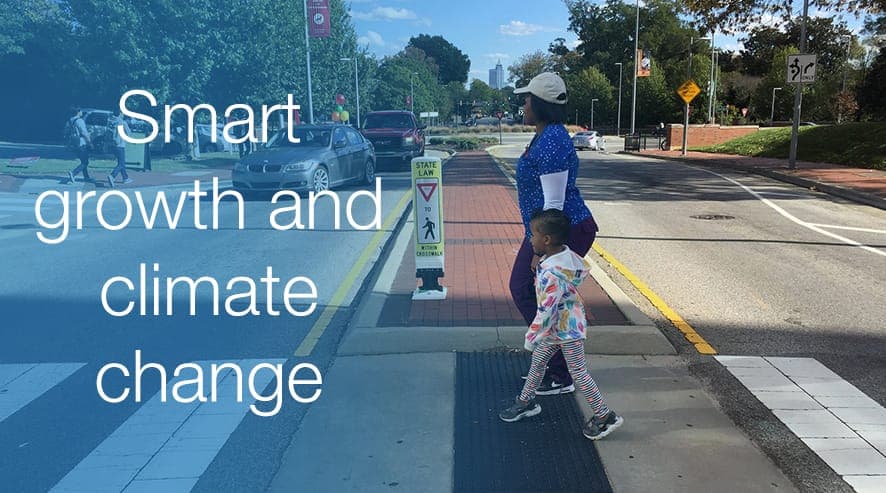
News
By Eric Cova, September 23, 2022

This week, leaders from around the world came together for Climate Week in New York to discuss progress, share strategies, and push toward “getting it done.” And for the first time in a long time, there is real momentum and cautious optimism toward addressing the climate crisis. $370 billion in climate-dedicated funding—passed in the Inflation Reduction Act (IRA) this past August—has given a boost to activists and climate efforts. The IRA includes clean-energy tax credits, rebates for electric vehicles and clean energy at home, investments into Green Banks, rewards for methane emissions reduction, and a broad swath of environmental justice initiatives. Despite areas where the IRA falls short (including not funding transit investments that would decrease emissions and supporting aspects of the fossil fuel industry), we laud the Act’s urgency and the resources it provides, which will have transformative market impacts.
Life-long environmental advocate and departing White House National Climate Advisor Gina McCarthy even noted in a recent New York Times op-ed, “the private sector no longer sees climate action as a source of job losses, but rather as an opportunity for job creation and economic revitalization,” and that “states and companies are running toward a clean energy future.”
These statements demonstrate a remarkable shift in perspective, especially when paired with the influx of financial tools to invest in green emission-reducing strategies. This is cause for hopefulness, but the fact of the matter is that these efforts do not yet meet our emissions targets to prevent the worst impacts of climate change. And while much of the conversation around climate centers on 2030 and 2050 as key dates to reduce emissions, we can’t get there without focusing on the here and now. In 2023, communities around the country—often the most vulnerable communities—are regularly experiencing the intense, frequent, and catastrophic impacts of climate, whether it be from heat waves, fires, flooding, or hurricanes. And while the investment in climate in the IRA is record-setting, many other major federal funding packages continue to fund business-as-usual infrastructure which will increase emissions, reduce air quality, and reinforce long-standing inequities.
So, yes the progress made this year is notable, but we must take action in every venue available. A smart growth approach tells us that we can’t just focus on electric vehicles, but that we also need to focus on public transportation, green mixed-use development, mixed-income affordable housing, and investment in complete streets to make active transportation more attractive.
Alongside private-sector initiatives and major federal funding packages, we need policy change at the state and local levels to reform zoning, incentivize or require high-performance green buildings, and embed approaches to maintaining affordability alongside investment in infrastructure, parks, and green technology. Policies need to recognize that the communities disproportionately impacted by climate change have also been denied wealth-building opportunities via discriminatory land use and lending policies, and are frequently harmed by divisive infrastructure such as highways.
The IRA’s investments are likely to accelerate the market uptake of green technologies in new construction and empower more local governments to adopt more stringent green building standards. The funding supporting retrofits, particularly for low and moderate-income households, and subsidies for home solar installation, heat pumps, more efficient water heaters, and even electric induction cooktops are a great start. We should prioritize education for consumers and support them so that they can utilize the rebates and transition to clean energy inside their own homes.
The 2021 $1.2 trillion infrastructure law, while not explicit about fighting climate change, can produce climate outcomes if states and metro areas choose to do so with their flexible funding. Read more on how these funds can be used toward climate action from Transportation for America, a program of SGA.
As we take these actions to reduce emissions and accommodate future growth, we must also support communities and individuals already impacted by the climate crisis and those whose risk continues to rise due to the consequences of a changing climate. For Smart Growth America, a programmatic priority is climate change and resilience, but this is not just a focus, we embed climate into everything we do. Because at the end of the day, one investment, one organization, one industry, or one town can’t do the work alone. We need everyone to come together so that together we can push for equitable, inclusive development, protect communities from climate impacts, and effectively put the historic federal investments to use.
Click here to read our post, Smart Growth for Climate Adaptation
Sign up for our newsletter to stay up-to-date and join the movement.
Related News

© 2025 Smart Growth America. All rights reserved
Site By3Lane Marketing














